Capacitor Discharge (CD) stud welding, using very short weld times, permits the welding of small-diameter studs to thin, lightweight materials. The weld cycle can be completed in 0.01 seconds on material as thin as 0.5mm. These fast weld times minimize heat buildup, resulting in welds with very little distortion, discoloration, or burning. Therefore, CD stud welding is often used when appearance is a critical product feature. CD stud welding uses a capacitor storage system to produce a rapid electrical discharge, stud welding guns, and fasteners. No ferrules or flux are needed. The CD stud welding method, used mainly for welding mild steel, stainless steel, and aluminum studs, includes two primary techniques: Contact and Gap. Both require a specially designed stud with a projection, or ignition tip, on its weld end. This tip provides accurate welding time control with precise repeatability.
Contact CD Stud Welding
During Contact CD stud welding, the stud is loaded into the gun and positioned in contact with the workpiece. Energy is then instantaneously discharged from capacitors through the stud’s projection. Since the size of the ignition tip cannot handle the current density of the capacitor’s stored energy, it vaporizes, creating a gap that allows an arc to be formed. As the arc begins to melt the stud and workpiece, the two pieces are forced together, and a weld is produced as the metal cools.
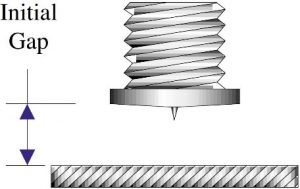
1. In Gap CD stud welding, the gun is positioned over the target at the start of the process, then begins to move toward the workpiece.
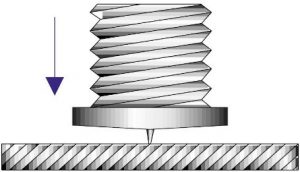
2 In both Gap and Contact CD stud welding, the stud makes contact with the workpiece.
The main difference between the processes is that the Contact CD process begins in this position.
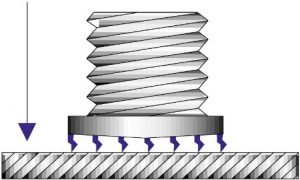
3. Upon contact with the base metal, the ignition tip vaporizes and an arc is formed. This arc melts the full diameter of the stud and the same area of the base metal.
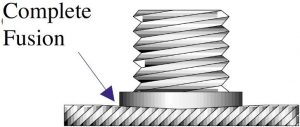
4. As the pieces are forced together by spring pressure, weight, gravity, or air pressure, the stud forms a complete bond with the base material.
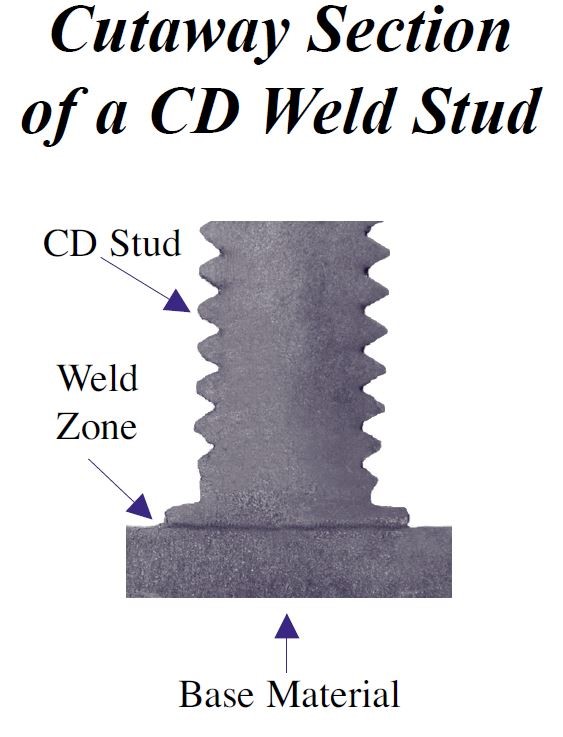
Gap CD Stud Welding
Gap CD stud welding offers shorter weld times with higher current densities when compared with contact CD stud welding. With such quick welding capability, this technique is particularly well suited to cosmetic applications, since it produces very minimal backside marking. In Gap CD stud welding, the stud is positioned above, not against, the workpiece. When the stud is released, it accelerates toward the workpiece. Simultaneously, an open-circuit voltage is applied to the gap. As in Contact CD stud welding, the ignition tip is vaporized and the pieces are melted and forced together to form the weld. Because the stud starts in motion during this welding technique, the weld times are even faster than those produced in Contact stud welding—approximately 0.004 seconds with peak currents of 9,000 amps. Gap CD stud welding is ideal when welding aluminum or non-ferrous alloys, which have an excellent ability to conduct heat. With slower techniques, the base material can draw heat away too fast for a weld to occur; but Gap CD welding’s fast weld times overcome this phenomenon.

